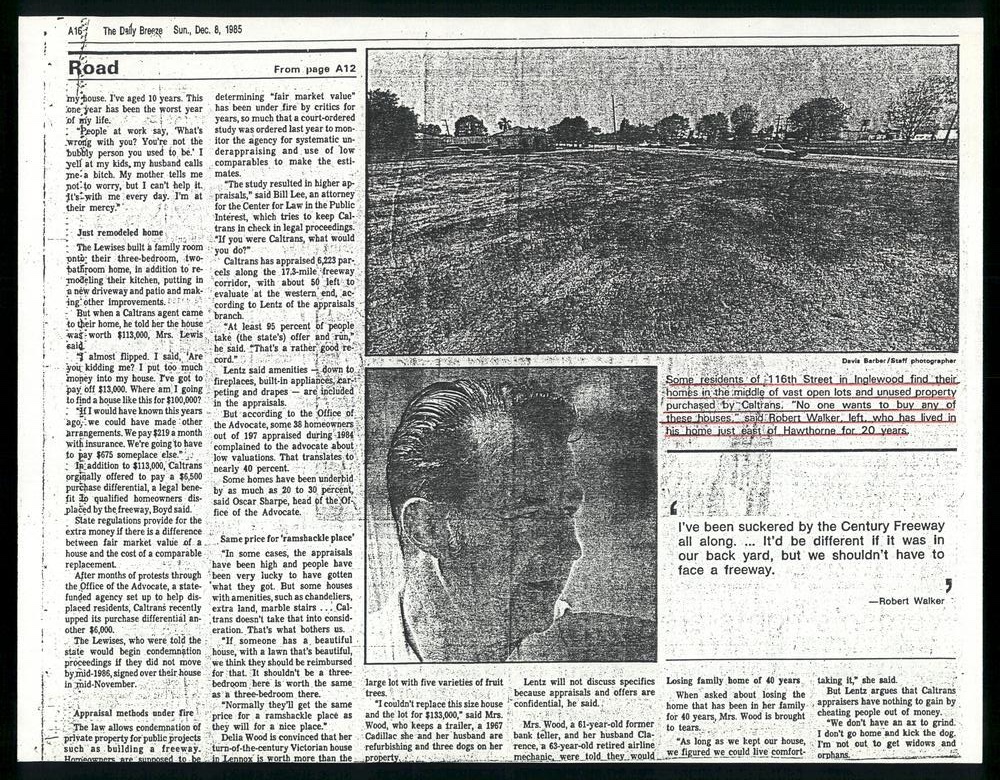A Community Splintered: Abandoned Homes, Vandalism, and Crime
A Community Splintered: Abandoned Homes, Vandalism, and Crime
When the construction of the Century Freeway was halted due to the injunction, life in the fragmented communities within the corridor took on a surreal and melancholic tone. Residents found themselves caught in a limbo of uncertainty, surrounded by abandoned homes, boarded-up buildings, and a palpable sense of loss.Only the echoes remain.
The wind blows across dust and broken glass. Signs warn that trespassing and loitering are forbidden where children used to play,
There are mute reminders of habitation: Concrete foundations where homes once stood, houses and factories with boarded windows, indecipherable graffiti screaming transitory, and secret epitaphs on stucco walls.
This is the wasteland known as the Century Freeway corridor.
— Larry Stammer, Times Staff Writer, in “Swath of Desolation Marks Boundaries of Fading Dream,” April 19, 1981.[1]
Living in a disrupted environment meant grappling with daily reminders of displacement and the upheaval caused by the freeway project. The once-familiar streets became a maze of deserted houses and empty lots, where the echoes of a past life mingled with the whispers of an uncertain future. Would the freeway ever be built?
For many artists, the corridor’s broken landscape became a canvas for transcribing the complex emotions of the splintered communities. The artistry that emerged during this period captured residents’ struggle as they navigated a landscape marked by abandonment and loss.
The specter of the unfinished freeway loomed large, casting a shadow of uncertainty over the fractured community, a constant reminder of the profound disruption and dislocation that defined everyday life in the corridor. The future of the Century Freeway and the potential consequences of benefits it may have brought remained shrouded in ambiguity, leaving residents to grapple with a sense of longing for resolution.
One article highlights the artistry of Jeff Gates, a photographer who began documenting the demolished houses along the Century Freeway corridor in the early 1980s. One poignant encounter captured by Gates involved Esther Keith, a resident deeply affected by the freeway's construction. When Gates showed her a photograph of a boarded-up house with a sign reading "Sorkness Fotos," Esther was moved to tears. This seemingly ordinary scene held a tragic backstory: the owner of the house had taken their own life after being forced to relocate due to the freeway project. Esther shared with Gates the emotional toll she and her husband endured while attempting to halt the freeway's construction, ultimately without success. Despite some concessions achieved through their efforts, such as the consent decree and associated social programs, Esther remained bitter about the hardships they faced. Her story serves as a poignant reminder of the human cost and complexities involved in major infrastructure projects like the Century Freeway.[2]Related Documents









[2] https://longreads.com/2015/03/23/the-last-freeway-2/